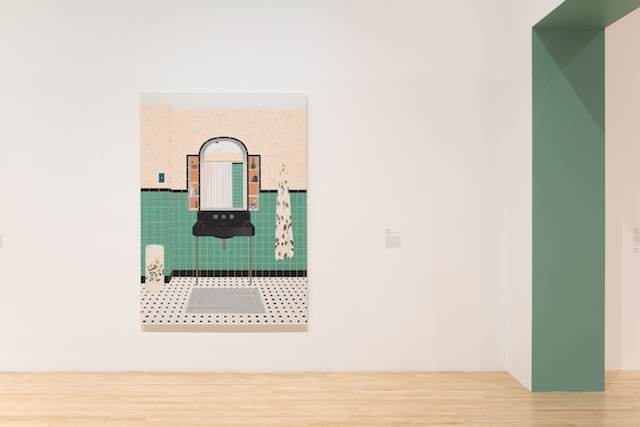Helen Molesworth’s last show for LA MOCA is devoted to painter and film critic Manny Farber, a painter’s painter who, in a 1962 essay, theorised the term ‘termite art’. It’s a slippery concept, but termite art might be best explicated by thinking about precisely what a termite does. Farber writes: ‘it goes always forward eating its own boundaries, and, likely as not, leaves nothing in its path other than the signs of eager, industrious, unkempt activity’. The termite is an agent of entropy, not just spawning decomposition, but chewing along with an absence of order or predictability. Termite art is also stay-in-your-lane work (or ‘run your own race’, as Oprah would say), not concerned with the ‘self-aggrandizing masterwork’ but more with the minutiae of ‘small pleasures’.
Putting Farber’s theory into practice, Molesworth has combined this survey of Farber’s paintings from the 1970s, 80s and 90s with a wide-ranging group show of artworks that she has grouped under the heading ‘termite art’. Molesworth has interpreted Farber’s essay and artworks as emphases on the everyday, and consequently many of the artworks on view depict still lifes, interiors or accumulations of household objects. In the catalogue, she writes, ‘The exhibition is also my most personal because it speaks to an idea, and perhaps, more importantly to a way of being in the world that goes to the heart of one of my deepest motivations for being interested in art: I am a student of the everyday, the mundane, and the transitory. As a feminist, I am interested in what can perhaps best be described as the minor.’ In Molesworth’s formulation of termite art, stressing the quotidian is a feminist gesture. Here, ‘the personal is political’ might be more specifically revised to ‘the everyday is political’.
Farber’s imperative to ingest the ‘world through a horizontal coverage’ also dovetails with Molesworth’s longstanding interest in rhizomatic and antihierarchical methods of curating. In her 2010 essay ‘How to Install Art as a Feminist’, Molesworth asks, ‘Is there a way to install works of art so that the artist and the art historian do not experience the space of the museum as the site of one triumph over another? What of the artist who experiences a sisterhood of artists, in which sameness and difference are attributes in constant (pleasurable?) friction with one another?’ In Molesworth’s model, each room in the show functions as a kind of chosen family brought together in their difference.
A favourite gallery is devoted to artworks that variably and obliquely address the floral still life, including works by Farber, Jordan Casteel, Rachel Rose, Maurice Harris and Becky Suss. Casteel’s painting of a giant pink-and-white funeral wreath propped up against a garbage can on a Harlem street corner hangs alongside sculptor-turned-florist Harris’s outsize floral arrangement – replete with hot pink nerines, crystals and shimmering champagne-sprayed plumosa ferns – titled Protect My Opulence (2018–19). Disrupting the alliance of good taste and the understated, Harris’s arrangement is a celebration of excess (calling to mind Janet Mock’s words, ‘People try to put us down by saying “she’s doing the most” or “he’s way too much”’).
When I visited, Harris’s flowers were slightly wilted, in the process of dying. The clever inclusion of the bouquet, which is replaced with a completely different arrangement weekly, distinctly transformed my relationship to the painted flora in the room. Standing beside actual fragrant, decaying flowers, one can’t forget that the painted flowers too are transitioning quickly between the states of life and death. As Barthes would have said, they are dead and they are going to die. As such, the bouquet and the other works in the room crystallise Farber’s vision of termite art. These works are not devoted to the eternal monumentality of the masterpiece, but bring attention to the intertwinement of small pleasures and the termite’s act of deterioration. As Molesworth writes, ‘Farber’s pictures are about the timelessness of change’. Termite art posits that death is not a teleological endpoint, but confirmation of the eternal condition of unpredictability, messiness and variation. Termite art urges us to pay close attention to the small pleasures along the way.
One Day at a Time: Manny Farber and Termite Art at Museum of Contemporary Art, Los Angeles, through 11 March
From the December 2018 issue of ArtReview
